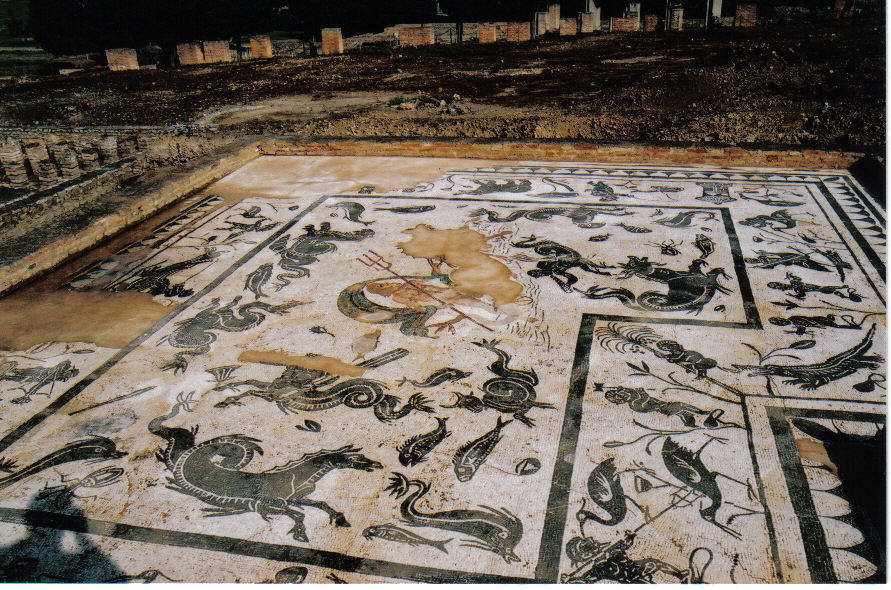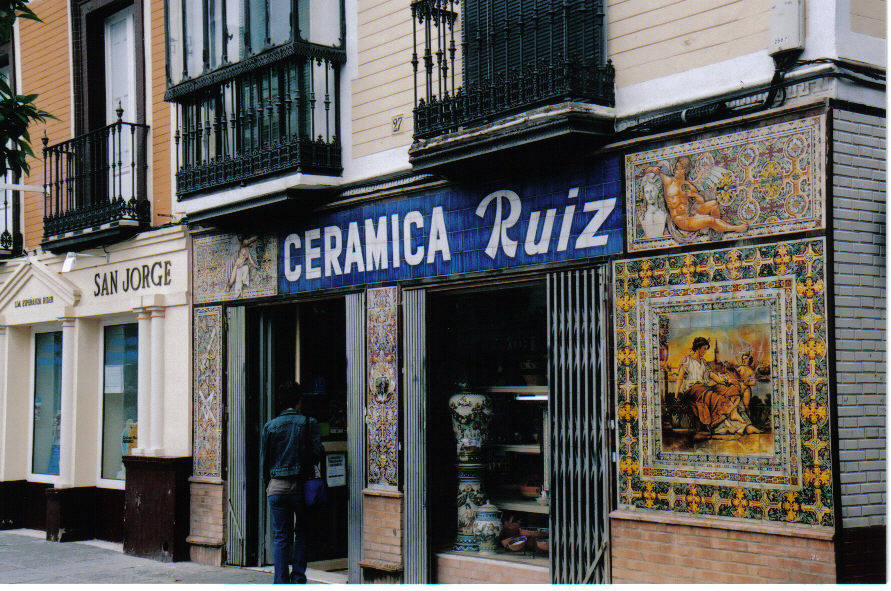
One of the many rooms inside the Alcazar, a palace built in the 1300's by Pedro I. While the palace was built in the Moorish style, it was built 100 years after the Christian reconquest of Seville from the Moors. The room you see is typical of what you would see as you tour the palace. Today the palace serves as the official residence of the king and queen when they are in Seville.

The Plaza de Espana is a very impressive building built as a pavilion for the 1929 Americas exhibition. There are brightly covered pictures of the different provinces in Spain in each of the arches.

Here is an example of one of the pictures that are found in each of the arches. In this case you see a scene from Don Quixote in the brightly colored painting.

The Plaza de Toros Real Maestranza is the main bullring in Seville. The ring was built in the 1760's and bullfights have been held there for the last 250 years.

We took a tour of the bullring on our last day in Seville. Bullfights were going to be held later in the day and the workers were getting the ring ready for the carnage to come.

About 10 miles north of Seville is the small town of Italica. The town was founded in 205 BC by the Romans and by the 2nd century AD it was an important Roman city. Two important Roman emperors (Trajan and Hadrian) were actually born in Italica. The amphitheater shown here was able to hold up to 40,000 spectators for gladiatorial contests.

A short walk from the amphitheater are portions of the Roman settlement in Italica. Frescoes can be found in many of the floors, one of the better examples shows Poseidon in the center.

One of the larger neighborhoods in Seville is called Triana. Triana is well known for their ceramics, one of the many stores is pictured here with the elaborate ceramic artwork on the building itself.